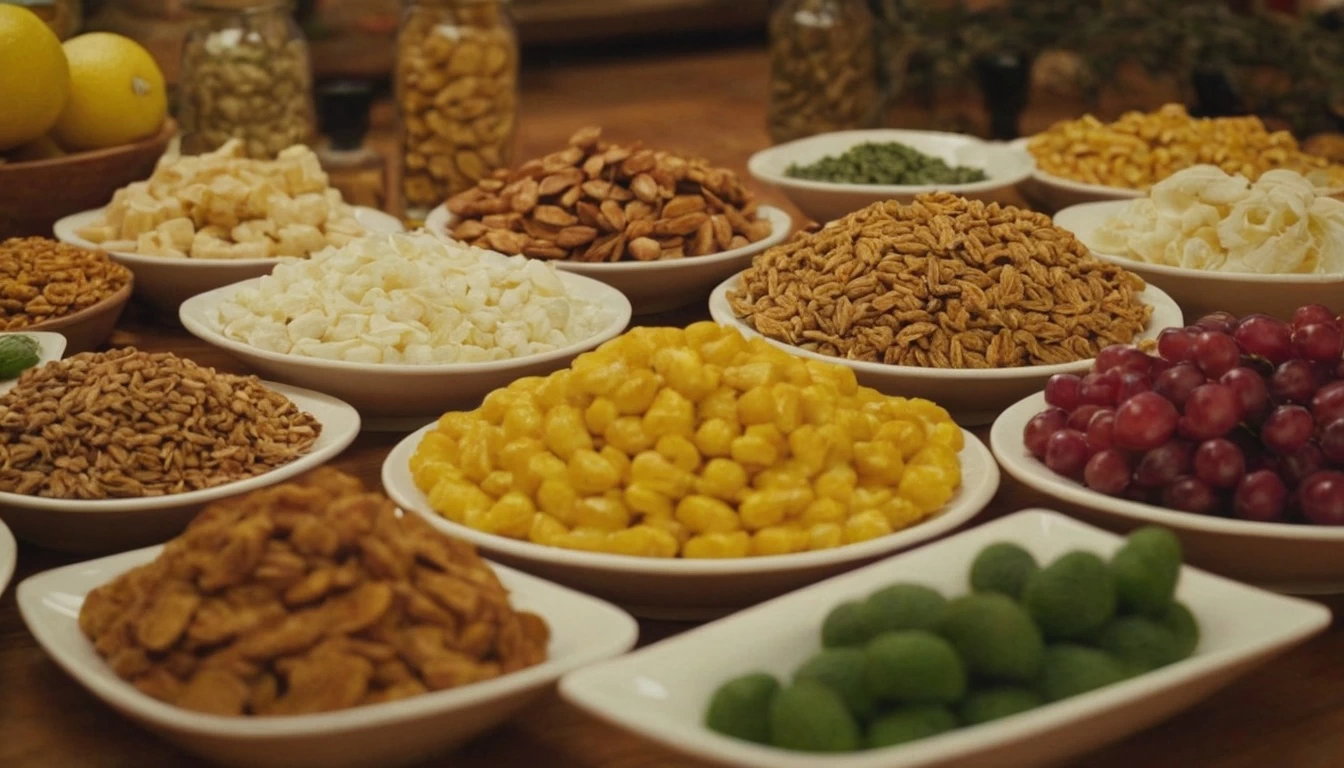Stay Satisfied Without the Extra Pounds: Top Filling Foods for a Healthy Diet
Maintaining a healthy weight while feeling full and satisfied can seem like a daunting task. However, by choosing the right foods, you can enjoy delicious meals that keep you satiated without packing on the pounds. This guide explores a variety of filling foods that support weight management, helping you make smart dietary choices that contribute to overall health and well-being.
1. The Importance of Satiety
Satiety, or the feeling of fullness, is crucial for weight management. Foods that promote satiety help control hunger and reduce the likelihood of overeating. Key factors that contribute to a food’s ability to promote fullness include:
- High Fiber Content: Fiber slows digestion, helping you feel full longer.
- High Protein Content: Protein increases satiety more than carbohydrates or fats.
- Low Energy Density: Foods that are low in calories but high in volume can help you feel full without consuming too many calories.
- Water Content: Foods with high water content can increase volume without adding calories.
2. Top Filling Foods for Weight Management
Incorporating these filling foods into your diet can help you stay satisfied while managing your weight effectively.
a. High-Fiber Foods
Oats:
- Why They’re Filling: Oats are high in soluble fiber, which slows digestion and stabilizes blood sugar levels.
- How to Enjoy: Have a bowl of oatmeal for breakfast, topped with fresh fruits and nuts.
Legumes:
- Why They’re Filling: Beans, lentils, and chickpeas are rich in both fiber and protein.
- How to Enjoy: Add legumes to salads, soups, and stews, or make a hearty bean-based dip like hummus.
Vegetables:
- Why They’re Filling: Vegetables are high in fiber and water, making them low in calories but high in volume.
- How to Enjoy: Fill half your plate with a variety of colorful vegetables at each meal.
b. High-Protein Foods
Greek Yogurt:
- Why It’s Filling: Greek yogurt is packed with protein and has a thick, creamy texture that helps with satiety.
- How to Enjoy: Enjoy it as a snack with a drizzle of honey and some berries, or use it as a base for smoothies.
Eggs:
- Why They’re Filling: Eggs are a great source of high-quality protein and essential nutrients.
- How to Enjoy: Have eggs for breakfast, add them to salads, or enjoy a hard-boiled egg as a snack.
Chicken Breast:
- Why It’s Filling: Chicken breast is lean and rich in protein, making it a satisfying main course.
- How to Enjoy: Grill, bake, or stir-fry chicken breast with your favorite vegetables.

c. Low-Energy-Density Foods
Soups:
- Why They’re Filling: Soups, especially broth-based ones, are high in water content and can be very filling.
- How to Enjoy: Start your meal with a vegetable-based soup to reduce overall calorie intake.
Fruits:
- Why They’re Filling: Fruits like apples, oranges, and berries are high in water and fiber.
- How to Enjoy: Eat whole fruits as snacks or add them to meals for natural sweetness and volume.
Popcorn:
- Why It’s Filling: Popcorn is low in calories but high in volume and fiber, making it a great snack.
- How to Enjoy: Opt for air-popped popcorn without added butter or oil.
d. High-Water-Content Foods
Cucumbers:
- Why They’re Filling: Cucumbers are 95% water, making them low in calories but hydrating and filling.
- How to Enjoy: Add cucumbers to salads or enjoy them as a refreshing snack with a sprinkle of salt and pepper.
Watermelon:
- Why It’s Filling: Watermelon is another high-water-content fruit that is both hydrating and low in calories.
- How to Enjoy: Enjoy watermelon slices as a snack or blend it into a refreshing smoothie.
Leafy Greens:
- Why They’re Filling: Leafy greens like spinach, kale, and lettuce are high in water and fiber.
- How to Enjoy: Use leafy greens as a base for salads, add them to smoothies, or incorporate them into soups and stews.
3. Tips for Incorporating Filling Foods into Your Diet
Making these foods a regular part of your diet can help you feel full and satisfied without overconsuming calories.
- Meal Planning: Plan your meals around high-fiber, high-protein, low-energy-density, and high-water-content foods to ensure balanced, satisfying meals.
- Mindful Eating: Eat slowly and pay attention to your hunger and fullness cues to avoid overeating.
- Healthy Snacking: Choose filling snacks like fruits, vegetables, Greek yogurt, or a handful of nuts to keep hunger at bay between meals.
- Balanced Plates: Aim to fill half your plate with vegetables, a quarter with lean protein, and a quarter with whole grains to ensure a well-rounded meal.
Conclusion
Achieving and maintaining a healthy weight doesn’t mean you have to feel hungry all the time. By incorporating filling, nutrient-dense foods into your diet, you can stay satisfied and support your weight management goals. Embrace the power of high-fiber, high-protein, low-energy-density, and high-water-content foods to enjoy delicious meals that keep you full without the extra pounds. Start making these smart dietary choices today for a healthier, happier you.


